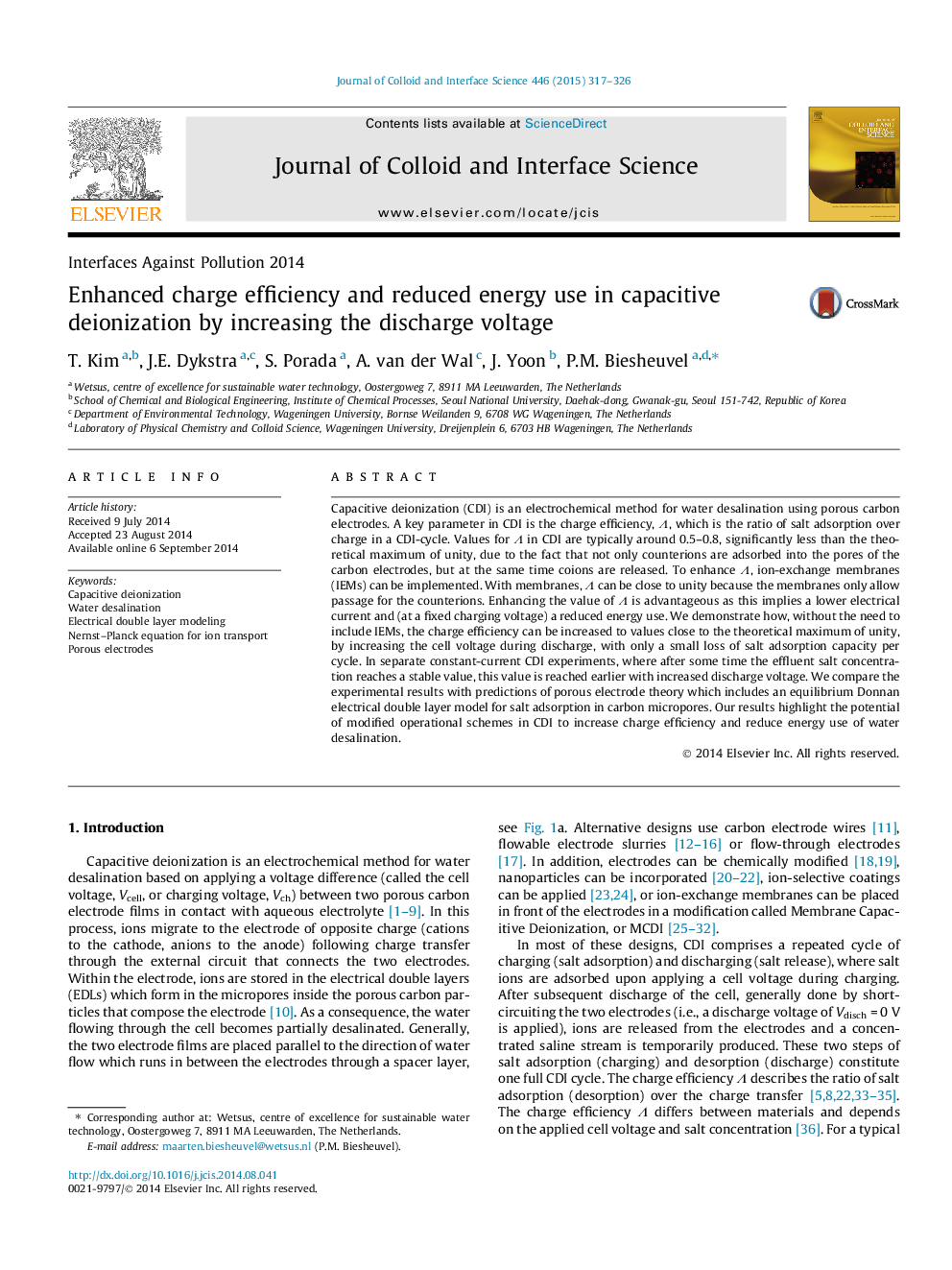| Article ID | Journal | Published Year | Pages | File Type |
|---|---|---|---|---|
| 6996903 | Journal of Colloid and Interface Science | 2015 | 10 Pages |
Abstract
Capacitive deionization (CDI) is an electrochemical method for water desalination using porous carbon electrodes. A key parameter in CDI is the charge efficiency, Î, which is the ratio of salt adsorption over charge in a CDI-cycle. Values for Î in CDI are typically around 0.5-0.8, significantly less than the theoretical maximum of unity, due to the fact that not only counterions are adsorbed into the pores of the carbon electrodes, but at the same time coions are released. To enhance Î, ion-exchange membranes (IEMs) can be implemented. With membranes, Î can be close to unity because the membranes only allow passage for the counterions. Enhancing the value of Î is advantageous as this implies a lower electrical current and (at a fixed charging voltage) a reduced energy use. We demonstrate how, without the need to include IEMs, the charge efficiency can be increased to values close to the theoretical maximum of unity, by increasing the cell voltage during discharge, with only a small loss of salt adsorption capacity per cycle. In separate constant-current CDI experiments, where after some time the effluent salt concentration reaches a stable value, this value is reached earlier with increased discharge voltage. We compare the experimental results with predictions of porous electrode theory which includes an equilibrium Donnan electrical double layer model for salt adsorption in carbon micropores. Our results highlight the potential of modified operational schemes in CDI to increase charge efficiency and reduce energy use of water desalination.
Related Topics
Physical Sciences and Engineering
Chemical Engineering
Colloid and Surface Chemistry
Authors
T. Kim, J.E. Dykstra, S. Porada, A. van der Wal, J. Yoon, P.M. Biesheuvel,
